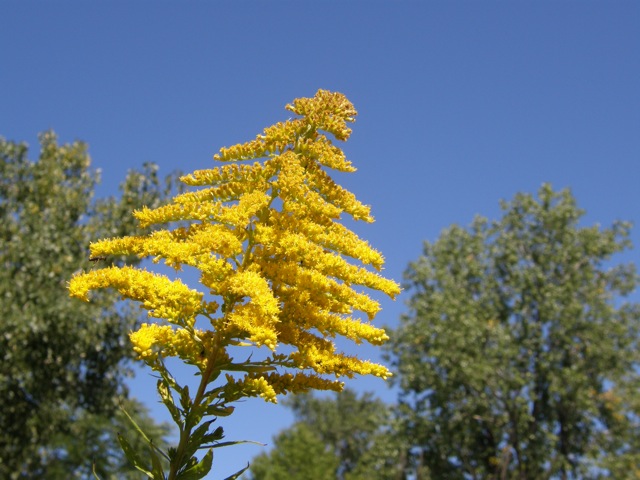Asteraceae, the daisy, sunflower or composite family.
Description:
Plant:
Robust, straight-stemmed plant, to 6', with many leaves, topped by a
pyramidal cluster of bright yellow flower heads on arched, one-sided
branches. Stems with downy hairs on upper part. Perennial.
Flowers:
Bright yellow heads, about 1/6" long clustered on one side of upwardly arched
branchlets, all forming a broad, pyramidal panicle to 12" or more in height.
Heads with both ray and disk flowers.
Leaves:
Alternate, generally lanceolate, but sometimes narrowly ovate to linear,
with sharp, forward-pointing teeth.
2"-6", with larger leaves nearer the base.
Fruit:
Dry, seed-like, attached to silky hairs.
Entire cluster goes silky-gray after active blooming is complete, generally
late in October.
Blooming:
August-October
Habitat:
Old fields, roadsides, clearings.
Comments:
This very common goldenrod often grows in large, spectacular stands.
Sometimes entire old fields will be covered the this plant admixed with
purple and white asters.
It is sometimes blamed for hay fever, but the real culprit is ragweed,
which blooms at the same time. Goldenrod is insect pollinated; its
pollen grains are sticky and do not drift in the air.
Ragweed is wind-pollinated, and consequently has the potential to cause
respiratory problems.
This is a highly variable species, and is now considered to include
varieties that were formerly considered separate species, e.g.,
Tall Goldenrod (Solidago altissima).
Where to find it:
In large stands on the north and west sides of the pond, and scattered
elsewhere.
